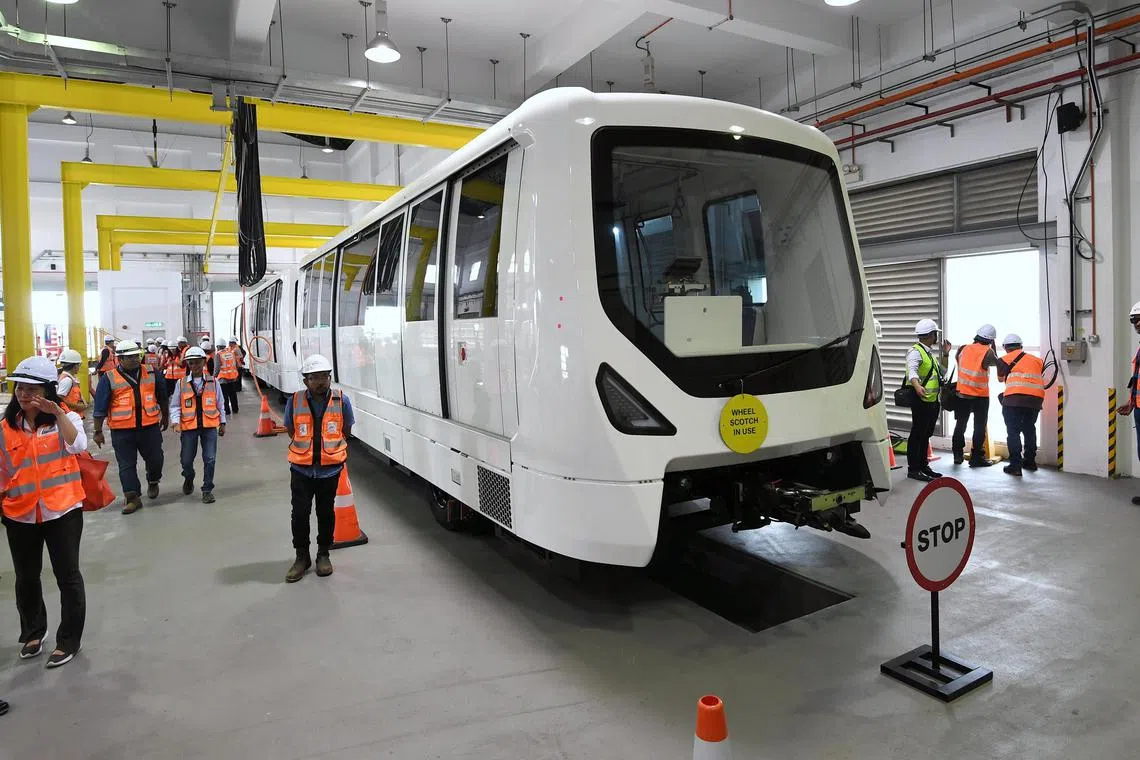Malaysia’s KLIA aerotrain service to resume by June with new trains costing $140m
Sign up now: Get ST's newsletters delivered to your inbox

The new aerotrain service will zip users between KLIA's main terminal and a satellite complex within three minutes.
PHOTO: THE STAR/ASIA NEWS NETWORK
Follow topic:
KUALA LUMPUR – A driverless train service at Malaysia’s Kuala Lumpur International Airport (KLIA) which connects its main terminal to a satellite complex for international flights is set to resume operations by the middle of 2025 after a gap of nearly two years.
Three new, larger trains costing RM456 million (S$140 million) for the aerotrain service will zip users between the two buildings within three minutes, said KLIA operator Malaysia Airport Holdings Berhad (MAHB). Two of the three-coach trains will be in service at any one time, and the third will be a spare.
“We should get it done by June, latest. April will be the earliest to resume as all tests for the train will be completed,” MAHB managing director Mohd Izani Ghani told The Straits Times after a news conference announcing the train service resumption.
“The trains are undergoing rigorous testing, and we have completed 25 per cent of the 80 tests for now,” he added.
KLIA itself, which was officially opened 26 years ago in 1998, is set to undergo a major refurbishment with new terminals, expansion of the current terminals, and a fourth runway added, Malaysia’s Transport Ministry told Parliament in December 2024.
The aerotrain, the sole internal train service at Malaysia’s main airline gateway, had been suspended following an embarrassing incident
The airport currently uses 37 buses to shuttle passengers between the two KLIA buildings.
The main KLIA Terminal 1 houses immigration counters and is used mainly for domestic flights, while international airlines use the satellite complex.
A second airline terminal called KLIA Terminal 2, located less than 2km away, opened in 2014 and is used by budget airlines.
The number of passengers travelling through KLIA increased to 57.1 million in 2024, compared with 47.2 million in 2023.
And notably, Singapore travellers to KLIA rose by over 14 per cent to 1.98 million passengers in 2024, compared with 1.74 million passengers in 2023.
The Changi-KLIA air route – one of the world’s busiest – saw a total of 4.1 million fliers in 2024, from 3.6 million in 2023.
At the news conference, MAHB’s Datuk Mohd Izani said the shiny, white aerotrain coaches, which are built in China, can carry 270 passengers each way, compared with 230 passengers previously.
The replacement project has faced several delays, with all three deadlines previously given – July 2024, end-January 2025 and March 2025 – going unmet, according to the airport operator.
MAHB said that the delays were partly caused by the termination of the aerotrain contract with a previous contractor and the appointment of a new one.
The aerotrain service is now handled by new contractors led by local company IJM, with subsidiaries of French transport player Alstom and Malaysian electrical power technology company Pestech International.
Zunaira Saieed is a Malaysia correspondent at The Straits Times covering the business beat with occasional forays into political coverage.


